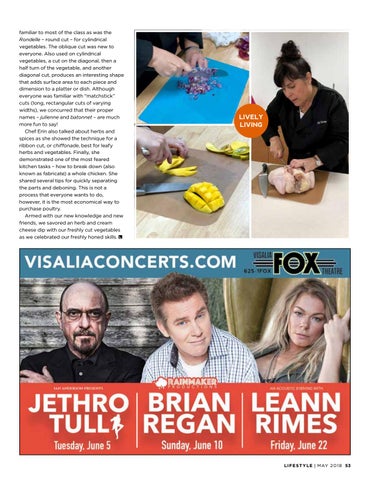familiar to most of the class as was the Rondelle – round cut – for cylindrical vegetables. The oblique cut was new to everyone. Also used on cylindrical vegetables, a cut on the diagonal, then a half turn of the vegetable, and another diagonal cut, produces an interesting shape that adds surface area to each piece and dimension to a platter or dish. Although everyone was familiar with “matchstick” cuts (long, rectangular cuts of varying widths), we concurred that their proper names – julienne and batonnet – are much more fun to say! Chef Erin also talked about herbs and spices as she showed the technique for a ribbon cut, or chiffonade, best for leafy herbs and vegetables. Finally, she demonstrated one of the most feared kitchen tasks – how to break down (also known as fabricate) a whole chicken. She shared several tips for quickly separating the parts and deboning. This is not a process that everyone wants to do, however, it is the most economical way to purchase poultry. Armed with our new knowledge and new friends, we savored an herb and cream cheese dip with our freshly cut vegetables as we celebrated our freshly honed skills. L
LIVELY LIVING
L I F E S T Y L E | M AY 2 0 1 8 53
